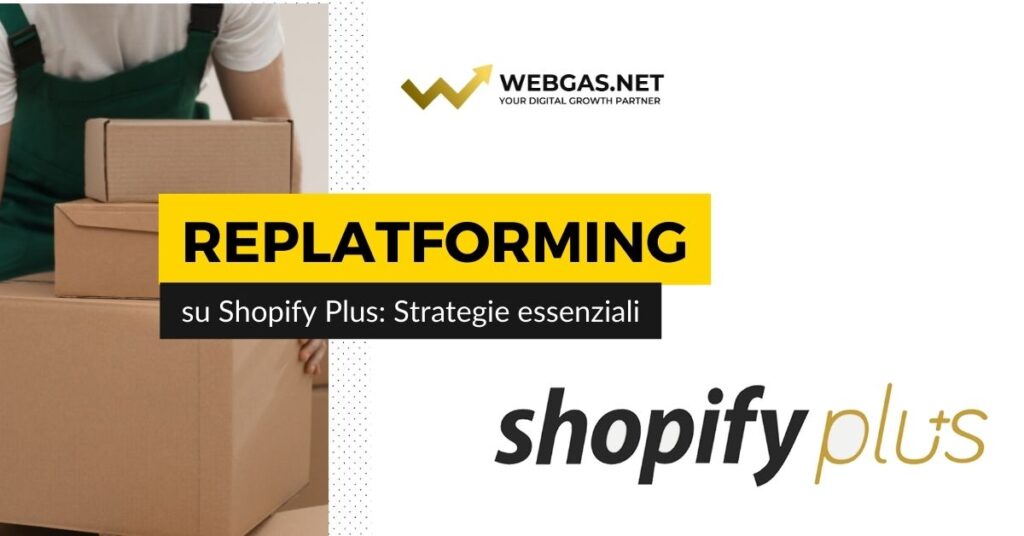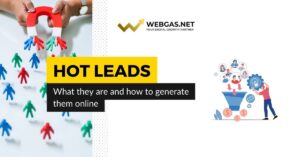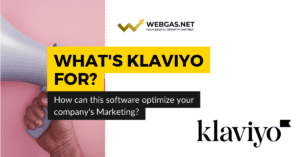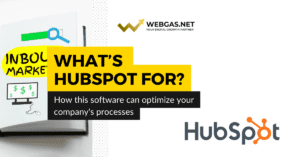In the dynamic world of e-commerce, choosing the right platform can be crucial to staying ahead of the curve. Shopify Plus emerges as a leading solution for fast-growing businesses, offering scalability, flexibility and a range of advanced features. However, the transition to a new platform, known as replatforming, can be a significant challenge.
This article is a comprehensive guide to the process of replatforming on Shopify Plus.
We will explore how to identify the right time for replatforming, strategies for a smooth transition, and how to maximize the potential of Shopify Plus for your business. Whether you are an online retailer looking to expand or a business looking for a more robust platform, this guide will provide you with the tools and knowledge for successful replatforming.

Assessing the Need for Replatforming on Shopify Plus
The first step toward successful replatforming is to recognize when the time is right to do it. There are several signs that a new platform needs to be considered:
- Scalability Limits: Does your current platform limit the growth of your business? If you are encountering barriers in handling a higher volume of traffic or expanding your product assortment, it may be time to upgrade to Shopify Plus.
- Performance Problems: Do you face frequent slowdowns or downtime? Speed and reliability are crucial in e-commerce.
- Lack of Functionality: If the current platform does not support the functionality needed to compete in the marketplace, such as advanced customization options or integrations with other technologies, it is a clear sign that it is time for a change.
- Management Difficulties and Updates: A platform that requires excessive maintenance or is difficult to update can limit your ability to react quickly to market trends.
Analysis of the Limitations of the Current Platform
To make an informed decision, it is important to critically analyze the limitations of your current platform and how Shopify Plus can overcome them. Consider aspects such as:
- Customization Capabilities: Shopify Plus offers greater freedom of customization than many other platforms, allowing you to create a unique user experience.
- Support and Security: Rate the quality of customer support and security measures provided by Shopify Plus.
- Integrations and API: Shopify Plus can easily integrate with a variety of applications and systems, improving operational efficiency.
Cost-Benefit Analysis of Replatforming on Shopify Plus
Finally, it is essential to conduct a cost-benefit analysis. Replatforming involves investments in time, resources and finances. Evaluate the potential long-term benefits that Shopify Plus can offer, such as improvements in sales, operational efficiency, and customer experience, versus the costs and effort required to make the switch.
The decision to move to Shopify Plus, in short, should be based on a thorough assessment of your business’s current needs, its future ambitions, and how the platform can support both.
Planning and Preparation
Creating a Detailed Plan
An effective replatforming strategy begins with careful planning. This plan should cover several key aspects:
- Timeline: Establish a realistic timeline for replatforming, including all key steps in the process.
- Goals: Set clear goals for replatforming, such as improvements in site speed, ability to handle greater traffic volume, or introduction of new features.
- Resources Needed: Assesses and organizes the resources needed, including financial, human and technological resources.
Selection of the Project Team
The success of replatforming depends largely on the team that runs it.
It is essential to select a dedicated team, which may include:
- Project Manager: A key figure to coordinate the project and act as a point of contact between different stakeholders.
- IT Developers and Technicians: Technical experts to handle technical aspects such as data migration, customization, and systems integration.
- Marketing and Sales: To ensure that the new site meets customer needs and helps achieve business goals.
- External Partners: Consider partnering with specialized agencies or consultants who have specific experience in replatforming on Shopify Plus.
Data Backup Strategy
Before beginning the migration process, it is crucial to prepare a comprehensive backup strategy to protect existing data. This includes:
- Full Backup: Make sure you have full backups of all your current site data, including product catalog, customer data, and order history.
- Recovery Plan: Establish a data recovery plan in case of problems during the migration process.
- Verification of Backups: Test backups to make sure they are working and complete.
Planning and preparation are crucial steps in the replatforming process. A well-defined strategy, a skilled and knowledgeable team, and data security measures are key elements in ensuring a smooth and successful transition to Shopify Plus.
Choose Features and Customizations
Shopify Plus Features Overview
Shopify Plus offers a wide range of advanced features that can be leveraged to optimize your e-commerce. Some of the most important features include:
- Advanced Customization: Shopify Plus allows for more in-depth website customization to meet the specific needs of your business.
- Efficient Order Management: Powerful tools for managing large volumes of orders and inventory.
- Multi-channel integrations: Ability to sell on multiple platforms and integrated social media channels.
- Analysis and Reporting: Access detailed data for in-depth analysis of store performance.
Choose Essential Custom Features
To maximize the benefits of your Shopify Plus site, it is important to identify the specific features that are essential to your business:
- User Experience (UX): Decide which UX elements are crucial to engage and convert visitors, such as custom layouts, optimized search bars, or chatbots.
- E-commerce Features: Determine the features needed to enhance the shopping experience, such as advanced product filters, custom suggestions, or quick checkout options.
- Brand Customization: Ensure that the site reflects your brand identity through customized themes, high-quality images, and content consistent with your brand message.
Integrate Third Party Tools and Applications
Shopify Plus offers a broad ecosystem of third-party applications and tools. It is important to select and integrate those that can further enhance your platform:
- Marketing and SEO Tools: Choose tools that support marketing campaigns, search engine optimization, and data analysis.
- Payment and Shipping Solutions: Integrate payment and shipping solutions that best suit the needs of your customers and the logistics of your business.
- Inventory and Customer Management Applications: Explore applications that can help you manage inventory and customer relationships more efficiently.
Selecting the right features and customizations on Shopify Plus is critical to building an e-commerce site that not only meets the current needs of your business but is also scalable to support your future growth. Integration of third-party tools and applications plays a key role in further enhancing your platform.
Data Migration and Testing
Data Migration Guide
Data migration is a critical step in the replatforming process. It is essential to ensure that all data are transferred securely and efficiently. Here are the key steps:
- Data Preparation: Before starting the migration, make sure the data are clean, organized and up-to-date. This includes product catalog, customer information, order history, and other essential data.
- Migration Tools: Use reliable migration tools, which can be provided by Shopify Plus or third parties, to facilitate data transfer.
- Phase-by-Phase Migration: Consider performing the migration in phases, starting with the least critical data to test the process.
Checklist of Data to Migrate
During the process of migrating to Shopify Plus, it is critical to transfer various types of data securely and accurately. Here is a checklist of data to consider:
- Product Information:
- Product details (title, description, price, SKU).
- Product variants (sizes, colors, materials).
- Pictures and videos of the products.
- Stock information and inventory management.
- Customer Data:
- Contact information (name, email address, phone number).
- Order history and purchase preferences.
- Shipping and billing information.
- History of Orders:
- Details of previous orders (date, items purchased, amounts).
- Status of orders (completed, pending, returned).
- Tracking and delivery information.
- SEO Information and Content:
- Meta-titles and meta-descriptions of pages.
- Blog and editorial content.
- Internal and external links to maintain site authority.
- Customer Reviews and Feedback:
- Product reviews.
- Customer ratings and comments.
- Store Settings:
- Tax configurations.
- Shipping and delivery settings.
- Terms and conditions, privacy and return policies.
- Data Analysis and Reporting:
- Historical sales reports.
- Website traffic data.
- KPIs and performance metrics.
- Third Party Integrations:
- Data from CRM, ERP and other integrated systems.
- Connections to marketing and social media platforms.
- Custom Configurations:
- Custom scripts or site-specific code.
- Widgets and features unique to the existing site.
Make sure you have a thorough plan for migrating each of these items, minimizing data loss and ensuring a smooth transition to Shopify Plus.
In-depth Testing to Ensure Functionality
Once the data have been migrated, it is important to perform extensive testing:
- Site Functionality: Test all site functionality, including purchase processes, product search, and login functionality.
- Data Integrity: Verifies that all migrated data are accurate and complete. Check product catalogs, customer data, and order histories.
- Device and Browser Compatibility: Make sure the site works properly on different devices and browsers.
Strategies for Minimizing Downtime.
During migration, it is important to minimize site downtime:
- Strategic Planning: Choose a time when site activity is generally lower to perform the migration.
- Communication to Customers: Inform customers in advance of potential downtime and provide updates during the process.
- Post-Migration Monitoring: After the site is launched on Shopify Plus, continue to monitor the site closely to identify and quickly resolve any problems.
A well-executed data migration and comprehensive testing process are critical to ensure a smooth transition to Shopify Plus. Preparing data in advance, using the right tools, performing thorough testing, and having a strategy to reduce downtime are all essential steps for successful replatforming.
Launch and Post-Launch Optimization
Preparation for Launch
Launching your site on Shopify Plus is a crucial time that requires careful preparation:
- Launch Plan: Develop a launch plan that details how and when the site will be presented to customers. Consider marketing campaigns via email, social media, and online advertising to generate anticipation.
- Final Verification: Before launching, perform a final verification of the site to ensure that all features are working as intended.
- Staff Training: Make sure your team is properly trained to use Shopify Plus, especially in order management and customer service.
Site Performance Monitoring
After launch, it is critical to closely monitor site performance:
- Traffic and Sales Analysis: Use analytical tools to monitor traffic, sales, and user behavior on the site.
- Identification and Troubleshooting: Be prepared to quickly identify and resolve any technical problems or bugs that may arise.
Post-Launch Optimization
The work does not end with the launch. Continuous optimization is essential for long-term success:
- Collection of Customer Feedback: Actively listen to customer feedback on the new site and make improvements based on their suggestions.
- A/B Testing and Conversion Optimization: Implement A/B testing to optimize site elements such as CTAs, page layouts, and purchase paths.
- Continuous Updates: Keep the site updated with new features, products, and content to maintain customer interest and engagement.
With a well-planned launch strategy, careful post-launch monitoring, and a commitment to ongoing optimization, your site on Shopify Plus is poised to thrive. This stage is not just the last step in the replatforming process, but the beginning of a new era of growth and innovation for your e-commerce business.
Replatforming on Shopify Plus is a significant step for any company aiming to expand and optimize its presence in the e-commerce world. This process, although challenging, offers the opportunity to transform your online sales platform into a powerful business tool that can support growth, improve the customer experience and increase sales.
Remember, successful replatforming lies not just in transferring data or launching the new site, but in taking a holistic approach that considers every aspect of your online business. From careful planning and choosing the right features, to careful data migration, strategic rollout, and ongoing optimization, each step is crucial to ensuring an effective and smooth transition to Shopify Plus.
Are you ready to embark on your replatforming journey on Shopify Plus?
Webgas.net is here to guide you through every step of this process.
We offer customized solutions, expert technical support and innovative strategies to ensure that your transition to Shopify Plus is not only hassle-free, but also a stepping stone to success for your online business.
Contact us today to begin your journey to more efficient, scalable and profitable e-commerce with Shopify Plus. We are here to turn your vision into reality.








